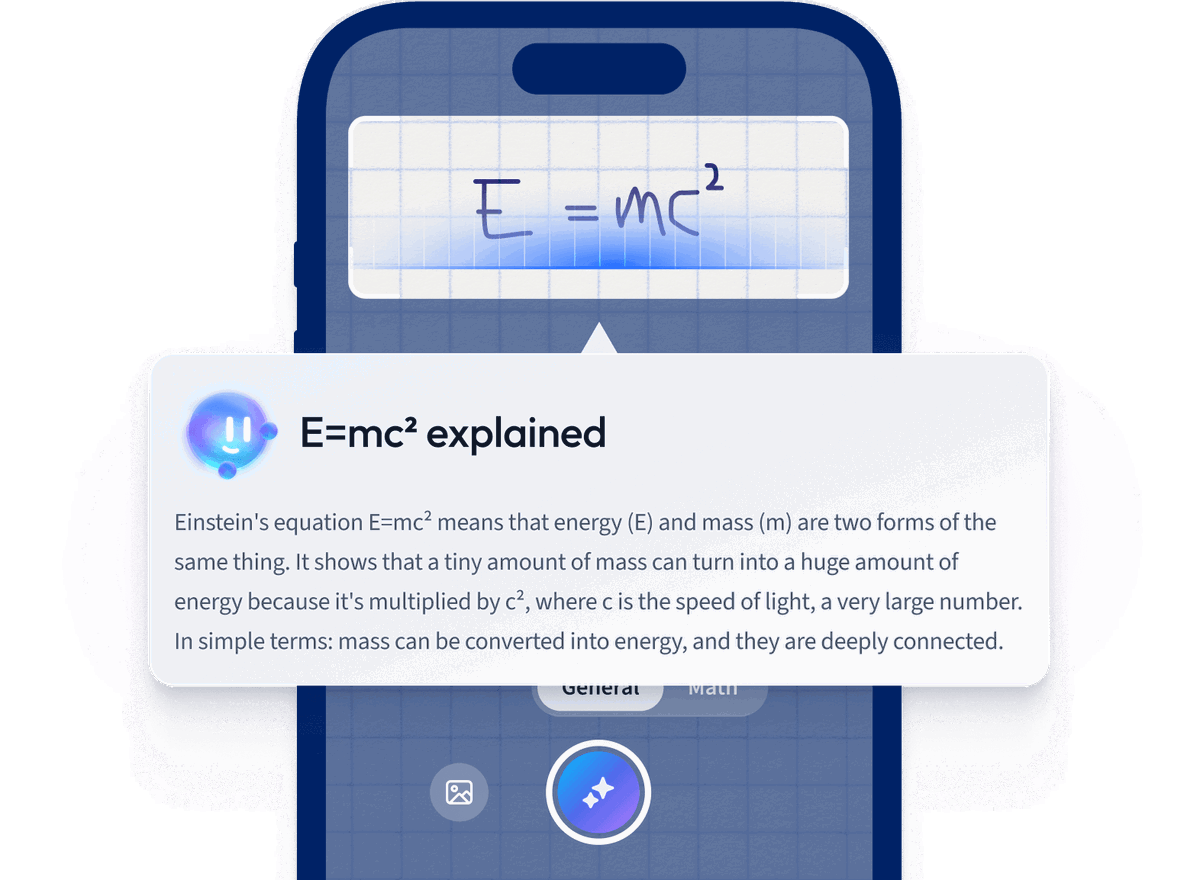Let's take a look at some important themes that are used throughout pure mathematics.
What are the topics in pure mathematics?
You can find the following topics on StudySmarter:
Proof
Proof is a logical argument that shows whether or not a mathematical statement is true. Mathematical proofs are robust - that is, they should consider every possibility, and there should be no holes in the logic. Proofs are built on axioms and are incredibly important - without them, we would not know that mathematical results are accurate.
You can use many different techniques to prove statements, and StudySmarter articles cover the key ones you need to know.
Algebra
Algebra is an abstract representation of numbers that allows you to make general statements consisting of mathematical operations. For example, suppose you wanted to write a mathematical statement involving an unknown quantity. In that case, you could refer to it as x and see how this variable would change as the statement changes.
There are a few direct subtopics that we explore on StudySmarter, but you can use algebraic concepts across all areas of mathematics - algebra is an extremely powerful tool, and a solid understanding of it is incredibly valuable. Even if you find it confusing, our guides will walk you through the fundamentals and allow you to apply them to questions similar to those you may see in your exams.
Functions
Functions are used to apply a particular operation or set of operations to an input value, giving an output value. They are often expressed as f(x), meaning that the function has a variable as a value, usually “x” for simpler functions. A simple example is \(f(x) = x+2\), this function just adds two to an input represented by x.
Functions are closely linked with graphs, and being able to plot them is an essential skill for your exams.
Coordinate geometry
Coordinate geometry is the study of geometry that uses a coordinate system, usually in two dimensions with x and y axes, as pictured below. Coordinate geometry can also include systems in three dimensions. Functions can be represented as graphs on the coordinate systems. Again, graphs are a big part of this topic!

Example of a 2D coordinate system Sequences and series
Sequences are a list of numbers that follow a pattern or rule, usually linked by some common function. Binomial expansion is also a form of sequence closely linked to factorials. You will need to know how to generate terms of a sequence, identify the common function and find their sums (the sum of a sequence is known as the series).
Trigonometry
Trigonometry is the area of mathematics involving angles and the geometric lines of shapes, most commonly triangles. Its applications are wider than you might expect – they aren't limited to triangles – and it is one of the most important areas of mathematics you need to understand for your exams. It includes trigonometric functions like sine, cosine and tangent and their reciprocals, radians (an alternative form of measuring angles to degrees), and other important rules.
Exponentials and logarithms
Exponentials are functions of the form Nx, which increase or decrease rapidly as x increases, as number N is raised to a power of x. An example of an exponential function is \(f(x) = 2^x\) and there is a special function ex.
Logarithms are the inverse function of an exponential. They can be used to find the power to which a number was raised to get another number. For any exponential, we have a logarithm in the form \(\log_a(b)\). For example, \(\log_2(8) = 3\) because \(2^3 = 8\). Again, there is a special function called the natural logarithm, which is the inverse of e - expressed as "\(\ln(x)\)".
Differentiation
Differentiation is a method of finding rates of change, ie gradients of functions. We can find this by drawing gradient lines of the graphs. This isn't always easy or precise, so we can also do it analytically. The result of a differentiation calculation is called the derivative of a function. The process of differentiation is represented by \(\frac{dy}{dx}\). This is equivalent to “change in y divided by change in x”, and x and y can be substituted for any variable.
There are a few different rules you will need to remember to help solve more complex problems, some of which are below:
You will also need to know how to derive trigonometric functions. For example, the derivative of \(\sin(x)\) is \(\cos(x)\).
Integration
Integration is a method for finding the area under a graph and is the inverse operation of derivation. An integral is represented by the \(\int\) symbol. This kind of integral is called an indefinite integral - a definite integral refers to the area of a given range and is represented in the format \(\int^a_b\), where a and b signify the desired range of values.
Once again, there are key methods that you can use to solve more complex problems, such as integration by parts, and you can memorize some standard results.
Numerical Methods
Numerical methods are ways to approximate mathematical solutions that cannot be found easily. Some examples where we can use these methods are when finding the roots of equations and integration.
One example is the Newton-Raphson method, an algorithm that repeatedly attempts to improve its accuracy with each iteration.
Numerical methods have extensive applications and are very important not only in mathematics but also in engineering. Some real-world examples are listed below:
Solving problems in naval engineering, aerospace and structural mechanics.
Machine learning algorithms.
Weather prediction.
Price estimations such as the ones done by flight companies.
As a mathematics student, knowledge of numerical methods will help you solve problems and gain a good foundation of tools used in the public and private sectors.
Vectors
Vectors are quantities that have both magnitude and direction, and you can use them to show the position of a point in relation to another point. Coordinates are useful to represent vectors, as shown in the diagram below!

Example of Coordinates as Vector Representation Vectors can be expressed using unit vectors i and j (representing the x and y directions, respectively). One example is given below for the vector \(v = \left[ \begin{array}{c} 1\\2 \end{array} \right]\).
\(v = \left[ \begin{array}{c} 1\\2 \end{array} \right] = 1i + 2j\)
Systems of vectors can also be expressed as column vectors when we have two or more vectors, and you can see an example below.
\(u = 3i, \space v = 4i, \space w = 7i\)
We can express these vectors as a column.
\(\left[ \begin{array} {c} u\\ v \\ w \end{array} \right] = \left[ \begin{array} {c} 3 \\ 4 \\ 7 \end{array} \right] i\)
\(\left[ \begin{array} {c} 3i \\ 4i \\ 7i \end{array} \right]\)
You will also need to know the basics of 3D vectors at A level, where the z-direction (represented by k) is introduced.

Example of Coordinate System in 2D and 3D Pure Maths - Key takeaways
Pure mathematics is an important area that is applied to other parts of mathematics and is most concerned with mathematical concepts.
Proof is a logical argument that shows whether or not a mathematical statement is true.
Algebra is an abstract representation of numbers that allows you to make general statements consisting of mathematical operations.
Functions are used to apply a particular operation or set of operations to an input value, giving an output value.
Coordinate geometry is the study of geometry that uses a coordinate system.
Sequences are a list of numbers that follow a pattern or rule, usually linked by some common function. Series are the sum of sequences.
Trigonometry is the area of mathematics involving angles and the geometric lines of shapes, most commonly of triangles.
Exponentials are functions of the form Nx, which increase or decrease rapidly as x increases, as number N is raised to a power of x, whilst logarithms are the inverse function of an exponential.
Differentiation is an analytical method for finding rates of change, ie gradients of functions. And integration is the inverse operation of derivation for finding the area under a graph.
Numerical methods are ways to approximate mathematical solutions that cannot be found easily.
Vectors are quantities that have both magnitude and direction, and you can use them to show the position of a point in relation to another point.
References
At StudySmarter, our mission is to provide students with reliable, expert-verified information to support their studies. We carefully review , update, and verify every source referenced in our articles to ensure accuracy, relevance, and clarity. It is important for us that our texts are based on references; check them out below:
- 1
How we ensure our content is accurate and trustworthy?
At StudySmarter, we have created a learning platform that serves millions of students. Meet
the people who work hard to deliver fact based content as well as making sure it is verified.
Content Creation Process:
Lily Hulatt is a Digital Content Specialist with over three years of experience in content strategy and curriculum design. She gained her PhD in English Literature from Durham University in 2022, taught in Durham University’s English Studies Department, and has contributed to a number of publications. Lily specialises in English Literature, English Language, History, and Philosophy.
Get to know Lily
Content Quality Monitored by:
Gabriel Freitas is an AI Engineer with a solid experience in software development, machine learning algorithms, and generative AI, including large language models’ (LLMs) applications. Graduated in Electrical Engineering at the University of São Paulo, he is currently pursuing an MSc in Computer Engineering at the University of Campinas, specializing in machine learning topics. Gabriel has a strong background in software engineering and has worked on projects involving computer vision, embedded AI, and LLM applications.
Get to know Gabriel














